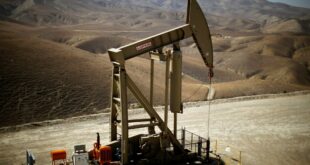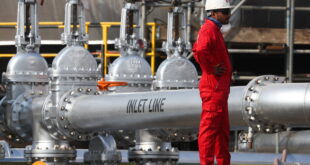OPEC just significantly overhauled its expectations for North American shale. projecting strong supply growth through the early 2020s. The revision came as part of OPEC’s World Oil Outlook (WOO). and it represents an acknowledgment from the cartel that it has failed to kill off U.S. shale by flooding the market.
There was still some hope for OPEC at this point last year. In the 2016 version of its WOO. OPEC predicted that North American shale would decline from 4.9 million barrels per day (mb d) in 2015 to just 4.1 mb d in 2017 – a contraction due to the supply glut – before rebounding a bit to 4.8 mb d in 2021. Low prices would have successfully halted shale in its tracks. ending one of the most dramatic growth stories the world of oil has ever seen.
But a year later. OPEC is conceding that a different reality could be playing out. The 2017 WOO predicts North American shale output rises from 5.1 mb d in 2017 to a massive 7.5 mb d by 2021 and 8.7 mb d in 2025. The 2021 figure is a whopping 56 percent higher than last year’s forecast.
It is hard to overstate the change in assumptions. it’s a swing of nearly 3 mb d by 2021. and that huge change totally alters how the cartel is approaching the oil market. The notion that U.S. shale won’t be killed off with low prices likely underpinned the group’s thinking when it agreed to limit production last year. That. of course. could be read another way: OPEC’s production cuts have paved the way for a stronger rebound from U.S. shale.
And as Bloomberg Gadfly points out. a stronger. more resilient shale sector likely means that OPEC needs to back out some of its supply. OPEC is forecasting that it will be supplying 33.5 mb d in 2022. only slightly higher than its 2016 output. That figure leaves out specific country-level production assumptions. so it’s not clear who produces what under OPEC’ assumptions.
It’s not all bad news from OPEC’s perspective. The group sees U.S. shale fizzling out after 2025. leaving OPEC once again in charge. The supply growth from the U.S. shale patch. OPEC says. “is heavily front-loaded. as drillers seek out and aggressively produce barrels from sweet spots in the Permian and other basins.“ Beyond 2030. U.S. shale enters decline. leaving the world much more dependent on OPEC for supply.
Although there are. in fact. questions about the staying power of U.S. shale – especially given some production problems lately – the long-term conclusion from OPEC is still a rosy one. a somewhat self-serving prediction that is belied by a growing number of voices predicting peak demand at some point over that timeframe. OPEC envisions total global demand rising by 15.8 mb d to 111.1 mb d in 2040. That includes a decline in demand from OECD countries by 8.9 mb d. a figure that is more than offset by strong consumption growth from developing countries by nearly 24 mb d.
Long-term forecasts are. in many ways. an exercise in guesswork. For many. the near-term is much more important and relevant. On that front. OPEC’s assumption that U.S. shale will continue to post impressive production gains is also not a given. The North American rig count has contracted for the better part of three months. and many shale companies continue to underperform. With much of the shale industry still unprofitable. investors are demanding a complete overhaul in strategy. emphasizing profits overs supply growth.
On the other hand. U.S. oil production edged up in the most recent data release from the EIA. putting output at 9.62 mb d. although there are questions around the accuracy of these weekly reports. But ConocoPhillips just signaled that it is back in a big way. announcing spending plans of $5.5 billion each year for the next three years. an increase of $1 billion from this year’s guidance. “There is (finally) some acceleration in capital spending.` Pavel Molchanov. a Raymond James Financial Inc. analyst. told Bloomberg. “Clearly there is greater willingness to invest in organic production growth.“ Whether Conoco’s decision is a harbinger of a broader rebound remains to be seen. But the oil majors do appear on stronger ground compared to their smaller shale peers. and that likely means that spending on U.S. shale from the largest integrated oil companies will continue to rise.
Overall. it appears that OPEC is now much more convinced than it was last year that it will have to battle U.S. shale for the foreseeable future.

 Iran Energy News Oil, Gas, Petrochemical and Energy Field Specialized Channel
Iran Energy News Oil, Gas, Petrochemical and Energy Field Specialized Channel



